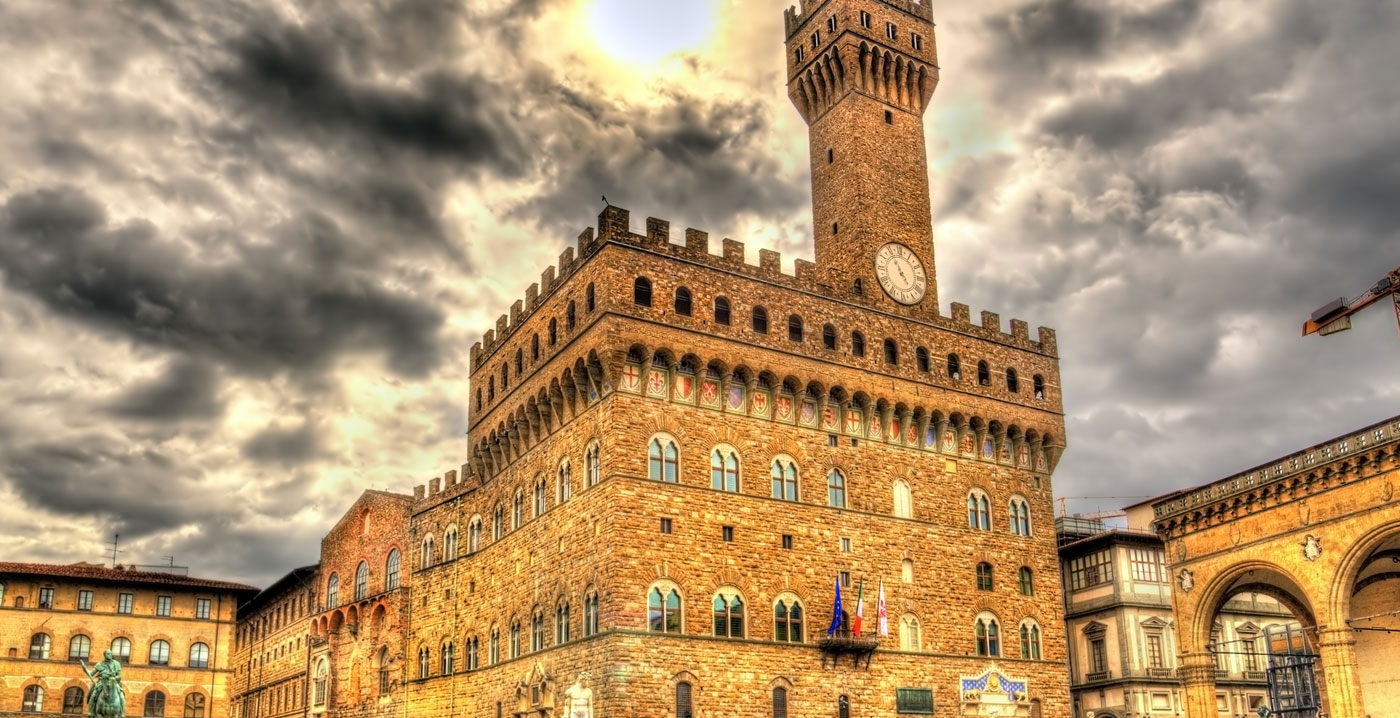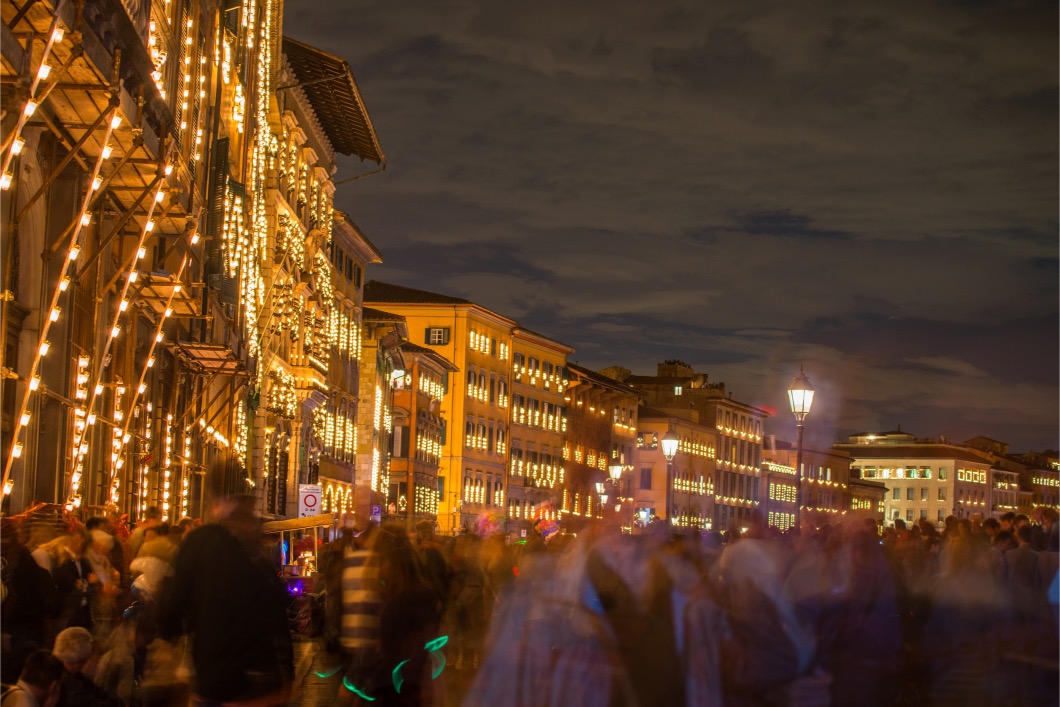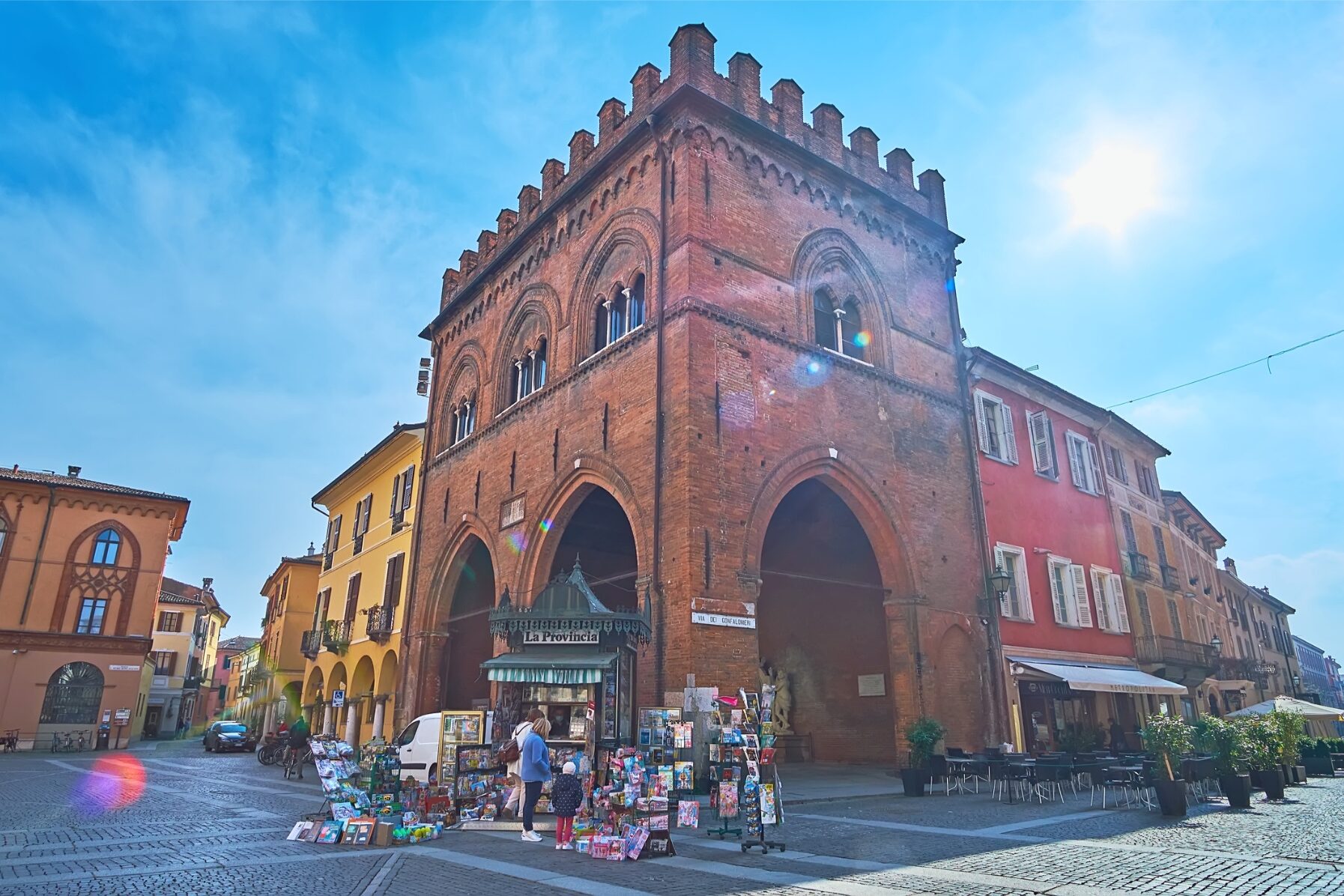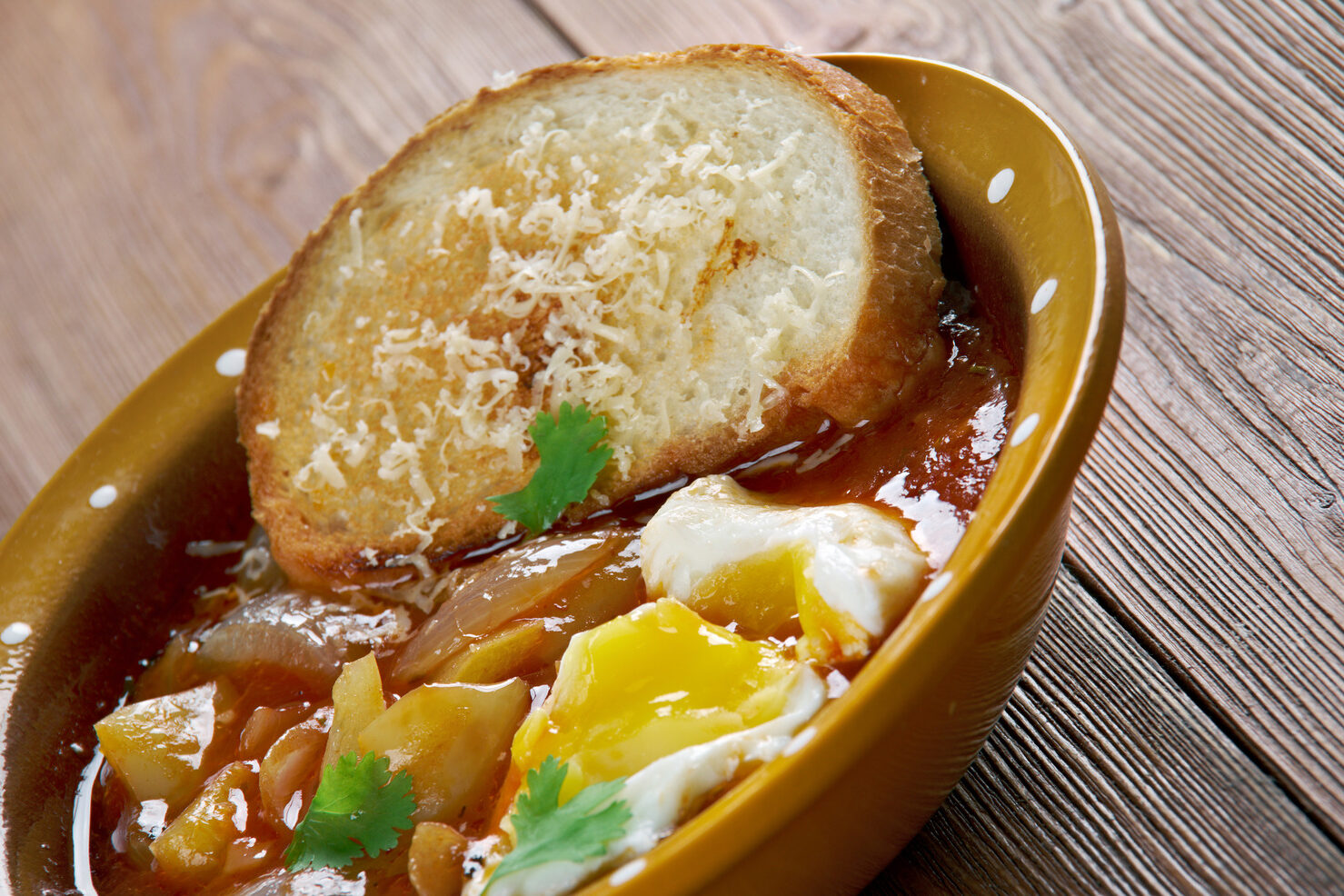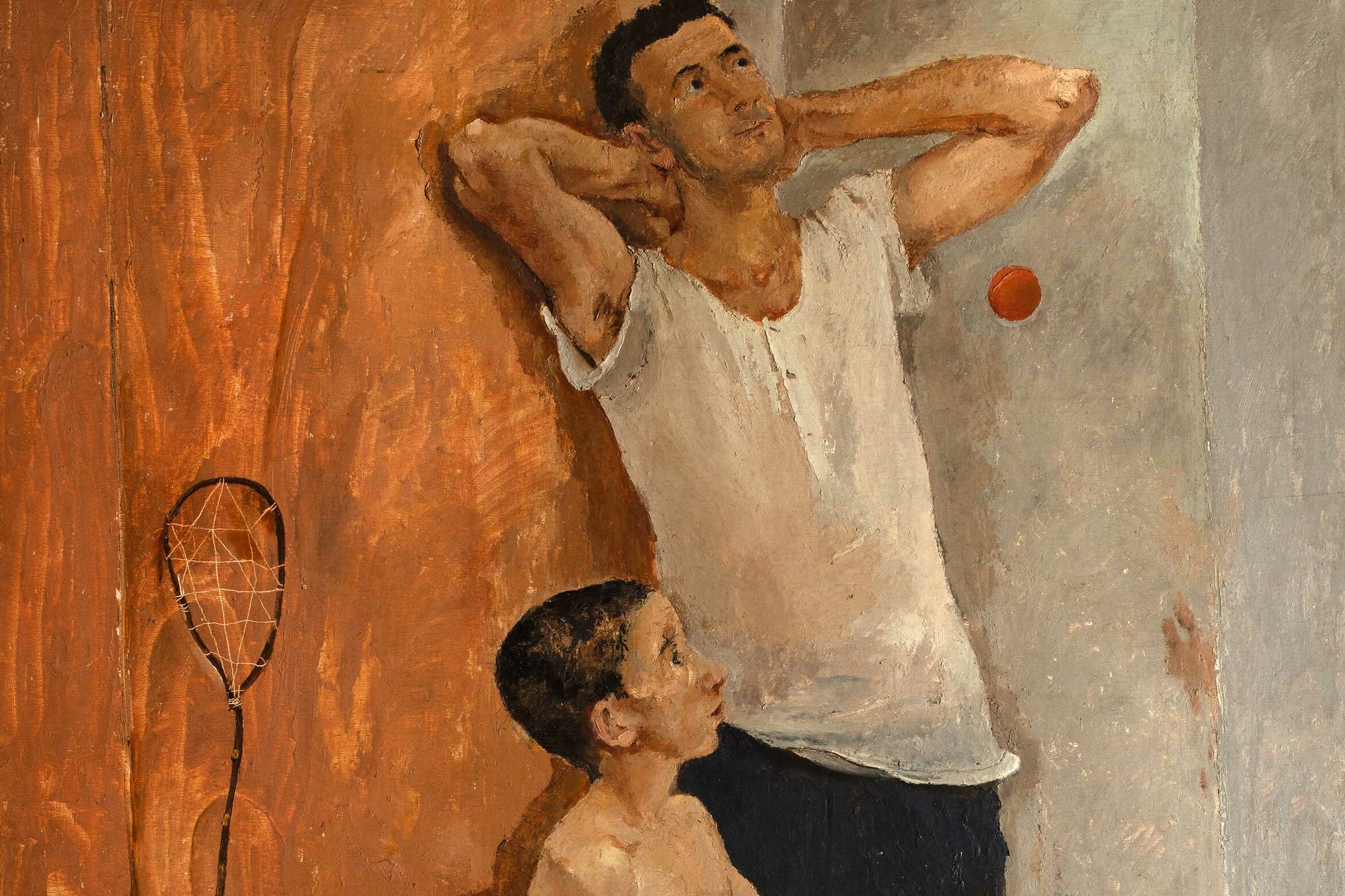The second landmark in our tour of the “houses of the House of Medici” in Florence is the one and only Palazzo Vecchio (Old Palace). Built around the year 1300 as Palazzo dei Priori (Priors’ Palace), the worldwide-known building overlooking Piazza della Signoria happened to change its name and function several times during the last 700 years. In the 15th century, when the Medici family first came to prominence, it was known as Palazzo della Signoria: it already served as the seat of the local government and it was thus a symbol of the Florentine Republic and people. In a sense, it is not surprising that – as the Medici started to gain more and more power – the family would increasingly look at this palace as a private residence (very much like a second Palazzo Medici), rather than the center of the city’s public life.
The ties between the family and the old Palazzo go back, at least, to Cosimo the Elder, Signore of Florence for three decades: in 1433, just a year before he eventually came to power, Cosimo was briefly imprisoned by the rival Albizzi and Strozzi families in a cell in the palace’s tower, the famous Torre d’Arnolfo (thus named after the architect who designed it, Arnolfo di Cambio). But it was not long before Cosimo returned to establish his own family as the one which would rule over Firenze for the next centuries.
In the 1450s – just as it was the case with Palazzo Medici – Cosimo the Elder commissioned Michelozzo di Bartolomeo with the realization of a new colonnaded courtyard for Palazzo della Signoria: even though the official residence of the Medici was still the one on Via Larga, this was a clear sign that the fine line between “public building” and “private residence” had already begun to blur. The eventual appropriation of the palace, however, would take some more decades because of an unexpected event: in 1494 – just two years after the death of Lorenzo il Magnifico – the Florentine people, led by the priest Girolamo Savonarola, revolted against the Medici and sent the whole family into exile.
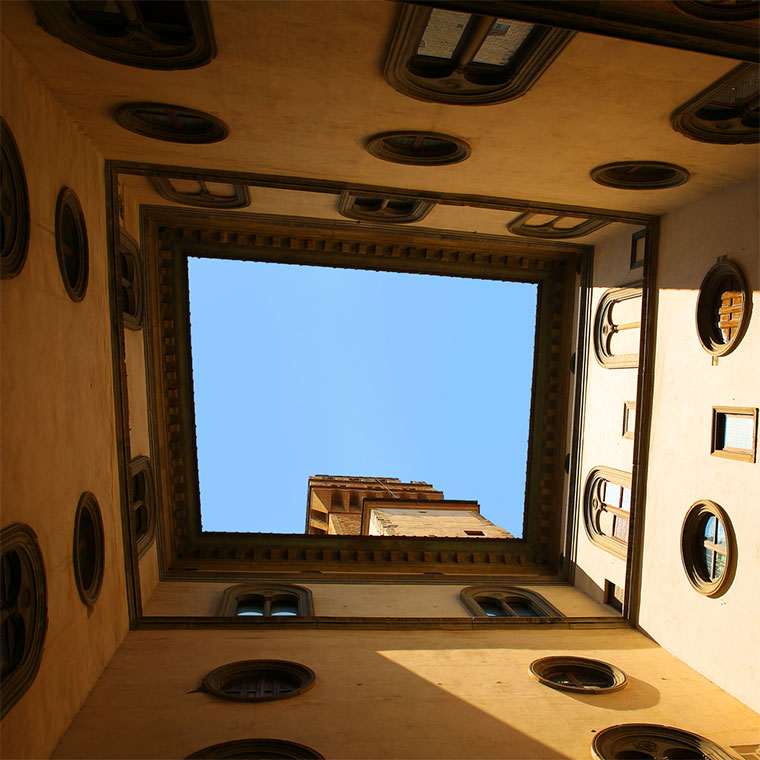
During the eighteen years that the Medici spent away from Florence, the city was governed by Savonarola and – after he was burned at the stake for heresy – by the gonfaloniere Pier Soderini. It was in this period that Palazzo della Signoria underwent some major changes: most notably, the hall nowadays known as Salone dei Duecento was juxtaposed with a greater hall called Salone dei Cinquecento, originally conceived as the seat of the new Republic’s Great Council. In addition, Donatello’s sculpture representing Judith and Holofernes was taken away from Palazzo Medici and moved in front of Palazzo della Signoria as a symbol of the Florentine liberty (it was later replaced by Michelangelo’s David and re-located in the so-called Hall of the Lilies).
The Medici restored their rule over Florence in 1512, when Cardinal Giovanni, second son of Lorenzo il Magnifico, managed to re-conquer the city with the help of the Papal troops. Upon Giovanni’s ascent to the Papacy with the name of Leo X in 1513, Firenze formally passed into the hands of his younger brother Giuliano, Duke of Nemours, and then to his nephew Lorenzo II, Duke of Urbino: however, given that both of Leo’s favorites were still inexpert and that they eventually died young (they are commemorated by the Michelangelo tombs in the Medici Chapels), the Pope himself had in fact full control of the city.
The powerful role of de facto ruler of both Florence and Rome was soon inherited by Leo’s cousin, Cardinal Giulio, who also became Pope in 1523 as Clement VII. The new head of the Medici appointed his cousin, Cardinal Ippolito, to rule Firenze on his behalf, but in 1527 the Florentines exiled the family once again as a response to the Sack of Rome. When the situation was restored, Clement chose Alessandro il Moro (the Moor), his illegitimate nephew (or son, as some suggest), to take the reins of the city: in 1532, the Pope made him the first Duke of Florence, thus transforming the Republic into an hereditary duchy.
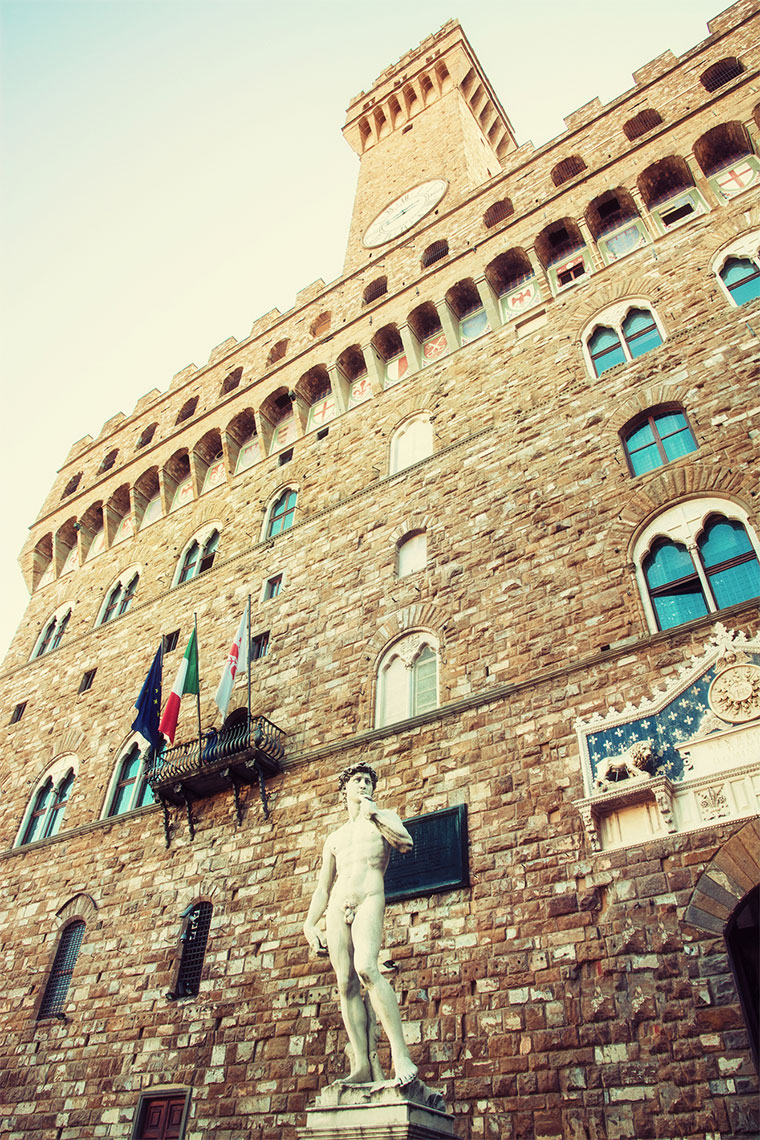
As for Palazzo della Signoria, it became known as the Ducal Palace around 1540, when Cosimo I de’ Medici (who had succeeded Alessandro upon his assassination) finally decided to transfer his residence here. Son of the famous condottiero Giovanni delle Bande Nere, Cosimo I descended from the junior branch of the Medici family, originating from Cosimo the Elder’s brother. It was during his reign that the ancient seat of republican government underwent an ambitious and complex restoration program that transformed it into a real royal palace. The works were supervised by none other than Giorgio Vasari, whose talent can be seen in the current appearance of the Salone dei Cinquecento (then the Duke’s throne room), adorned with paintings representing important episodes from the life of Cosimo I.
All in all, the monarch’s aim was to glorify his own dynasty. That’s why he also commissioned Vasari with the realization of the palace’s monumental apartments, a series of finely frescoed rooms, each dedicated to an illustrious member of the Medici family and matched – on the floor above – by a room of the same size devoted to a pagan deity. But a similar purpose was served by other areas of the building as well, to begin with Duchess Eleanor of Toledo’s apartments, which include a marvelous private chapel frescoed by Agnolo Bronzino.
In 1569, Cosimo I was elevated to the title of Grand Duke of Tuscany, marking an important transition in the history of the Medici. As a consequence, he soon decided to set up his new residence in the even more grand Palazzo Pitti: it was then that the old Palazzo della Signoria, used as the ducal Wardrobe and housing government offices, acquired its current name of Palazzo Vecchio.
